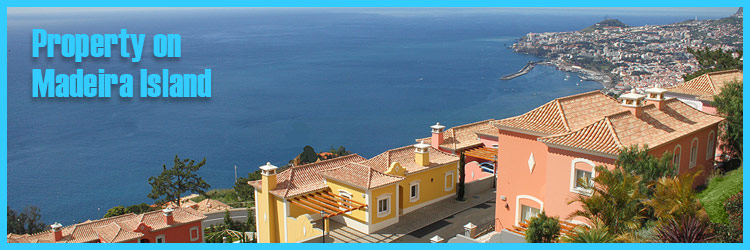Madeira is bouncing back. After February’s devastating floods, it is on a fresh drive to attract second-home buyers from Britain.
Madeira is a small island — just 30 miles long — with 250,000 residents. Located 600 miles south-west of Portugal and 360 miles off the african coast, it enjoys year-round warmth.
It has long been a favourite with Britons, especially retirees, who love its lush gardens, hillside walks along the lavadas waterways, and spectacular views from steep volcanic mountains.
The island is officially Portuguese and British tourists account for about a fifth of the 900,000 foreign visitors who arrive by air each year and the 450,000 arriving on cruise ships.
They also make up the bulk of the foreign buyers of holiday homes.
In February, Madeira hit the headlines when flash-floods and mudslides took the lives of more than 40 islanders.
Severe storms battered the south of the island and bulldozers were required to clear mud from the streets of the old capital, Funchal.
Bridges were swept away and the airport was closed. The world’s most famous Madeiran, real Madrid football star Cristiano Ronaldo, even played a charity match on the island to raise money for the relief effort. it’s estimated this will cost about £1.2bn.
However, only three months on, transport and communications are back to normal, emergency homes have been built for locals who lost their properties and easyJet has resumed flights from Britain.
Buoyed by funding from the local authorities, the island’s estate agents are advertising in the UK and worldwide to tempt foreigners back.
Much of Madeira’s property history is tied up with the British Blandy family. John Blandy, who first visited Madeira in the early 19th century during the Napoleonic wars, later returned to establish his legendary wine business.
By the end of that century, his descendants had become one of the largest exporters of Madeiran wine and built a vast family estate on the island.
This estate, Palheiro — still run by the Blandy descendants, who also own several other businesses across the island — has been the scene of some exciting new holiday home developments.
In 1993, the 18-hole par-72 Palheiro golf course, designed by US golf architect Cabell Robinson, opened. it’s set in what used to be the estate’s hunting grounds.
The course was redesigned in 2003 and entered the list of Europe’s top 100 courses a few months ago in Golf World magazine.
Meanwhile, in 1997 a country house on the estate was transformed into the fivestar Casa Velha do Palheiro hotel.
The estate is home to new residential developments in what has become known as Palheiro Village.
‘Buyers can select plots on which villas or apartments can be built according to one of a variety of design options under either freehold or fractional ownership,’ says a spokesman for the Palheiro Village resort.
Designed by the algarvebased architect Michael Brown, all Palheiro Village homes have panoramic views over the Bay of Funchal and the atlantic Ocean.
A second scheme of new housing can be found on the Ponta de São Lourenço peninsula, home to the 16-hectare Lorde resort, a ten-minute drive from Funchal airport.
The houses capture the charm of a Madeiran seaside village; there are 127 one, two and three-bedroom villas and apartments on a scheme laden with restaurants, bars and shops, plus a marina boasting berths for 264 vessels.
Modern homes aren’t the only properties on offer.
In Funchal, where prices have fallen 20% from their 2007 peak, you could get a 70-year-old hillside villa for some £200,000, rising to £350,000 in the centre of the town, where a few small apartments cost £100,000 each.
In the north of the island — about 35 minutes from Funchal by motorway — there are large villas for about £225,000.
Although there are several new schemes of holiday homes to complement the stylish period property on the island, scope for future development is limited. Some 67% of Madeira is designated as protected land and national forest.
On many other areas, particularly the steep hills, building work cannot be undertaken and there are increasingly restrictive planning rules being introduced. as a result, there is unlikely to be substantial numbers of new-builds.
‘There are two options for financing a second home in Madeira,’ says Simon Smallwood, of international Private Finance, a mortgage firm specialising in helping Britons buy overseas
‘You can raise the money against your primary UK residence. The downside is that you will be raising funds in sterling and then need to transfer the money into euros, which will be expensive because of the current exchange rate,’ he says.
‘Or you can have a Portuguese mortgage, borrowing in euros on a mortgage secured against the property in Madeira. Portuguese lenders have historically been more cautious than lenders in the UK so are in a much stronger position, post credit crunch.’
Britons can buy on the island without restriction, but must pay 5% to 8% of purchase price in transfer tax and notary fees. Holiday home running costs include an annual tax of 0.2% to 0.8% of the home’s value.
Madeira has no inheritance tax and VaT is just 15%, but capital gains taxof 25% is payable on profits when you resell the home.
So if you want a warm welcome in the island known as The Floating Garden of the atlantic, Madeira might be the answer.
International Private Finance (020 7484 4600, internationalprivate finance.com).
—————
This article from Graham Norwood – http://bit.ly/c9SXq7





